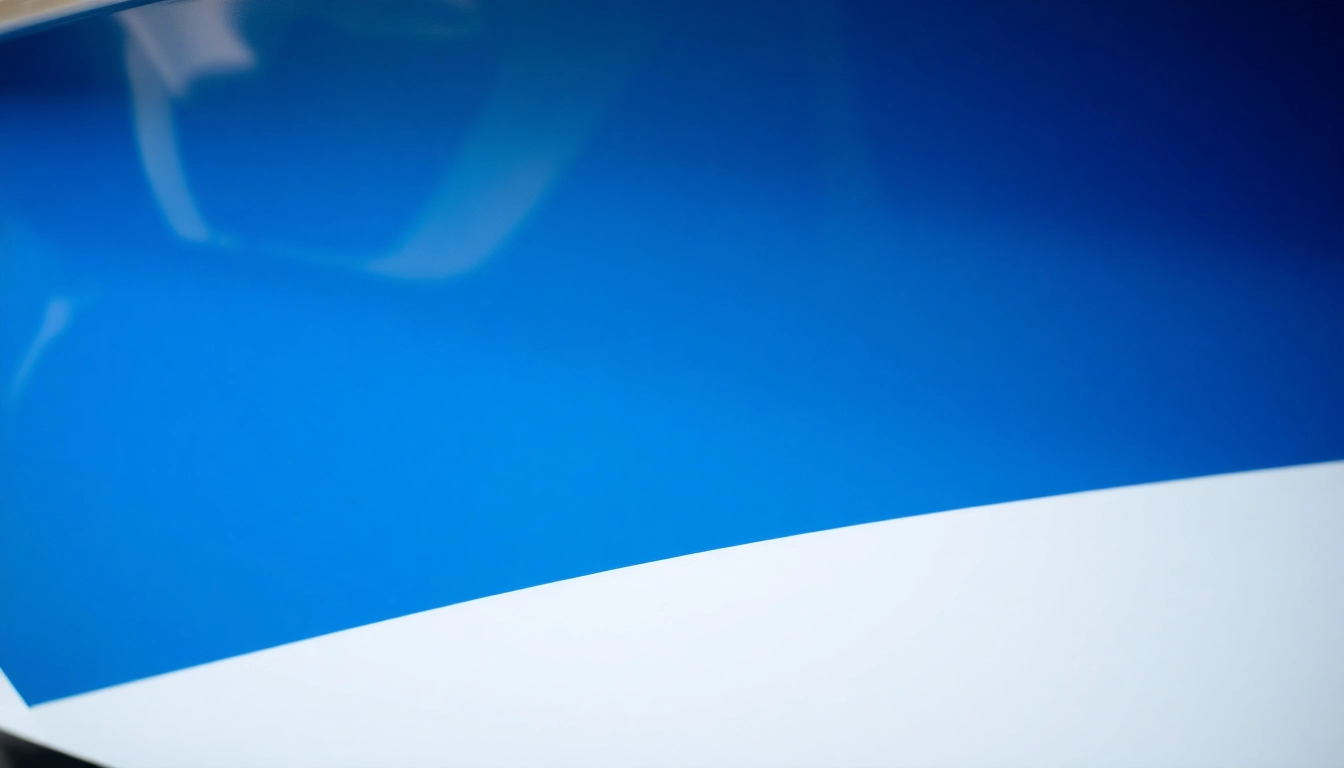Introduction to Boat Sealing: Essential Protection for Marine Surfaces
Maintaining the pristine condition and high value of your boat requires more than just regular cleaning; it demands effective protection against the relentless forces of nature. One of the most critical aspects of marine maintenance is applying a high-quality Boots Versiegelung. This specialized coating creates a resilient barrier that shields your vessel’s gelcoat or paintwork from environmental damage, UV rays, and corrosion. In this comprehensive guide, we explore the core benefits of boat sealing, dive into proper application techniques, compare advanced sealing systems, and provide expert insights to help you select the perfect product for your boat.
What Is Boat Sealing and Why Is It Important?
Boat sealing refers to the process of applying a protective coating designed to bond with the surface of your vessel, forming a durable, waterproof surface. This coating is often a polymer-based sealant that offers long-lasting protection against the adverse effects of saltwater, UV radiation, dirt, algae, and other environmental contaminants. The significance of sealing your boat cannot be overstated—especially for fiberglass and gelcoat surfaces, which are prone to degradation if left unprotected.
The primary purpose of this process is to preserve the aesthetic appeal and structural integrity of your boat, ensuring it remains shiny, smooth, and resistant to stains or damage. Proper sealing also prevents the accretion of grime and barnacles, reducing maintenance effort and increasing the vessel’s lifespan. Over time, especially in marine environments, unprotected surfaces can suffer from oxidation, discoloration, and cracking, which significantly diminishes the boat’s resale value. Applying a high-quality boat sealant effectively mitigates these issues and keeps the boat looking brand new for years.
For a seamless experience, learn more about the best sealing products and application methods at our site, especially tailored for marine environments.
Main Features and Protective Effects of Boat Sealants
Superior Water and Environmental Resistance
A key benefit of boat sealing is its ability to repel water, preventing penetration into the gelcoat or paint layer. This water resistance reduces the risk of blisters, mildew, and salt intrusion that can corrode underlying materials. Moreover, the sealant acts as a barrier against harmful UV rays, which can cause fading, chalking, and surface deterioration over time.
Enhanced Shine and Surface Smoothness
A well-applied sealant elevates the glossy appearance of your boat’s exterior, restoring the vibrant colors and adding a sleek, mirror-like finish. This not only boosts aesthetic appeal but also creates a smooth surface that resists dirt and algae buildup, simplifying cleaning routines.
Long-Lasting Durability
Marine-grade sealants are formulated to withstand harsh conditions, including temperature fluctuations and constant exposure to saltwater. When applied correctly, these coatings can last from 6 to 12 months, minimizing the frequency of reapplication and ensuring continuous protection.
Comparison to Traditional Cleaning Products
Unlike conventional cleaning agents that only remove surface contaminants, true boat sealants provide a lasting shield. While waxes and polishes temporarily enhance shine, they often wear off quickly and require frequent reapplication. Sealants, on the other hand, are designed for durability and long-term performance, offering a more cost-effective and maintenance-friendly solution.
Steps for Optimal Application of Boat Sealant
Preparation of the Surface
Achieving maximum adhesion and protection begins with thorough surface preparation. Start by cleaning the entire hull using a high-quality marine cleaner, such as the BCC Power Cleaner 1L, ensuring all dirt, algae, stains, and salt residue are removed. For stubborn deposits, a dedicated gelcoat cleaner or polish may be necessary. Once cleaned, inspect for oxidation or scratches; these should be addressed with polishing or sanding for a smooth, defect-free surface.
Dry the surface completely using microfiber towels like the BCC Microfaser Towel or BCC Drying Towel. Moisture or dirt obstructions can compromise sealant bonding, so meticulous cleaning and drying are critical before proceeding.
Proper Application Techniques
Applying the sealant evenly is vital for optimal protection. Use a foam applicator, such as the BCC Polierpuck or BCC Polierschwamm, to spread a thin, consistent layer. Work in small sections under shaded conditions to prevent premature drying or streaking. Utilize circular or cross-hatch motions to ensure uniform coverage.
For best results, follow the specific product instructions regarding curing time and layer thickness. Some sealants may require multiple coats, especially on older or heavily oxidized surfaces.
Post-Application Care and Maintenance
Once the sealant has cured, typically after 24 hours, buff the surface with a clean microfiber cloth to enhance gloss. Regular maintenance involves washing your boat with gentle marine-safe cleaners and periodic reapplication of the sealant—typically every 6-12 months depending on environmental exposure.
Ensuring consistent upkeep prolongs the protective layer’s lifespan and maintains the boat’s visual appeal.
Effectiveness and Longevity: What to Expect
Protection Against Environmental Elements and UV Damage
Modern marine sealants utilize advanced polymer and ceramic technologies, providing a durable barrier against UV rays, which are responsible for fading and surface degradation. They also shield against pollutants, acid rain, and salt fog, all of which erode gelcoat and paint surfaces over time.
Long-Term Maintenance and Preservation of Your Yacht’s Value
Consistent application of high-quality sealants like the MARINE SEALANT MS-3000/60 V2 or ceramic top coats ensures your vessel retains its value and appearance. Long-lasting protection reduces the frequency of costly repairs and restorations, making the investment in sealing products a financially sound decision.
Routine Re-sealing and Touch-Ups
To sustain optimal protection, assess your boat’s surface periodically—especially after harsh weather or extended use—and reapply sealant as needed. Modern products often include easy-to-use applicators, and professional-grade systems like the Boat & Caravan Care Starterset provide comprehensive tools for routine maintenance.
Professional Versus DIY: Choosing the Right Approach
While professional marine detailing services offer expert application of high-end sealants, a well-informed DIY approach can deliver impressive results. With proper surface preparation, quality products like the BCC Power Sealer or Gtechniq Marine Ceramic Top Coat, and attention to detail, enthusiasts can achieve comparable protection levels at a fraction of the cost.
For DIY applications, utilize specialized tools such as the GLORIA FoamMaster foam sprayer or the BCC Wash-Kit to ensure uniform application and efficient workflow.
Conclusion
The importance of boots versiegelung as part of your boat maintenance routine is undeniable. Whether you seek to maintain an aesthetic shine, protect against environmental damage, or extend your vessel’s lifespan, comprehensive sealing solutions are your best ally. Invest in high-quality products, follow precise application methods, and establish a regular maintenance schedule to keep your boat in premium condition. With the right choices and care, your boat will continue to perform superbly and look stunning for years to come.

